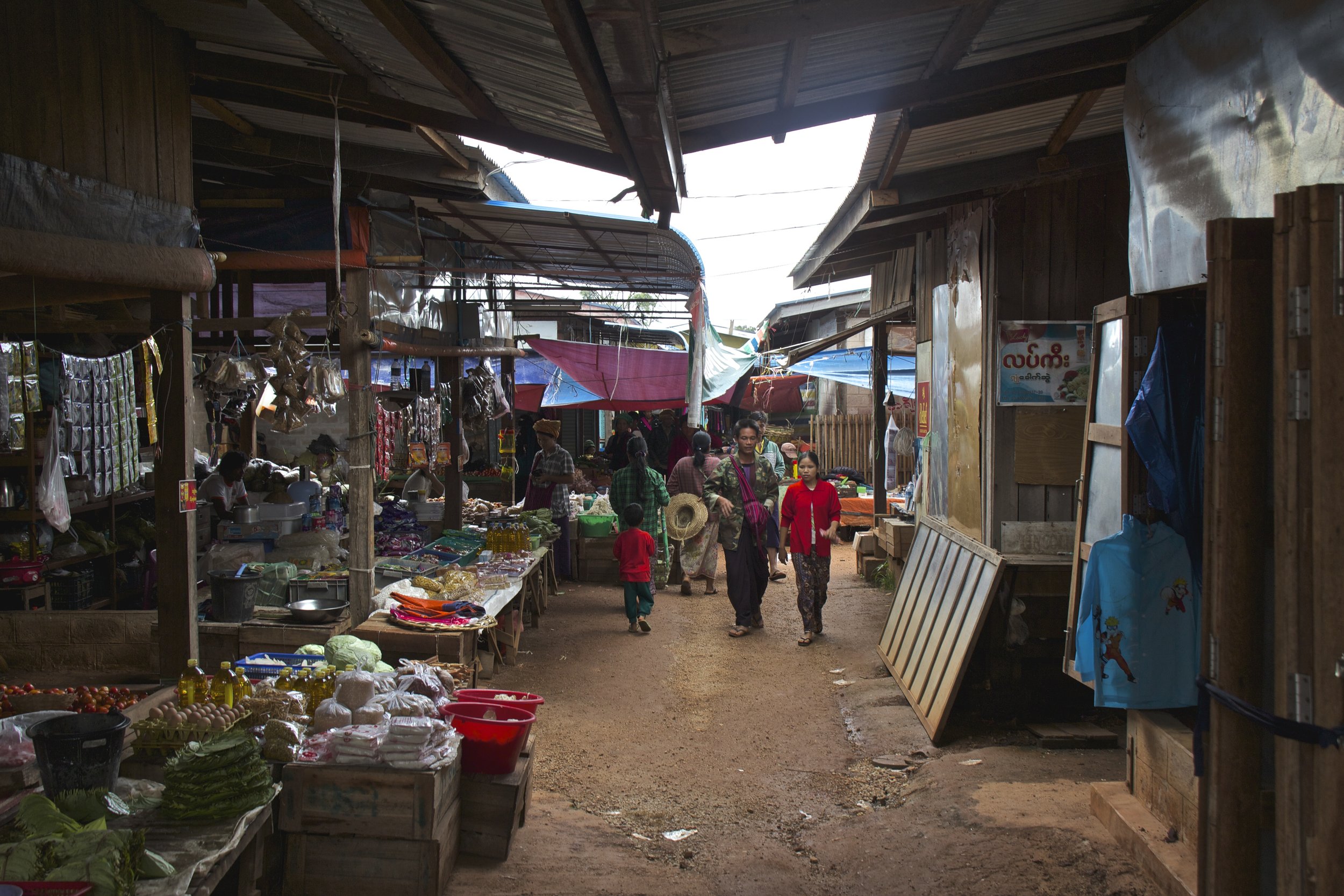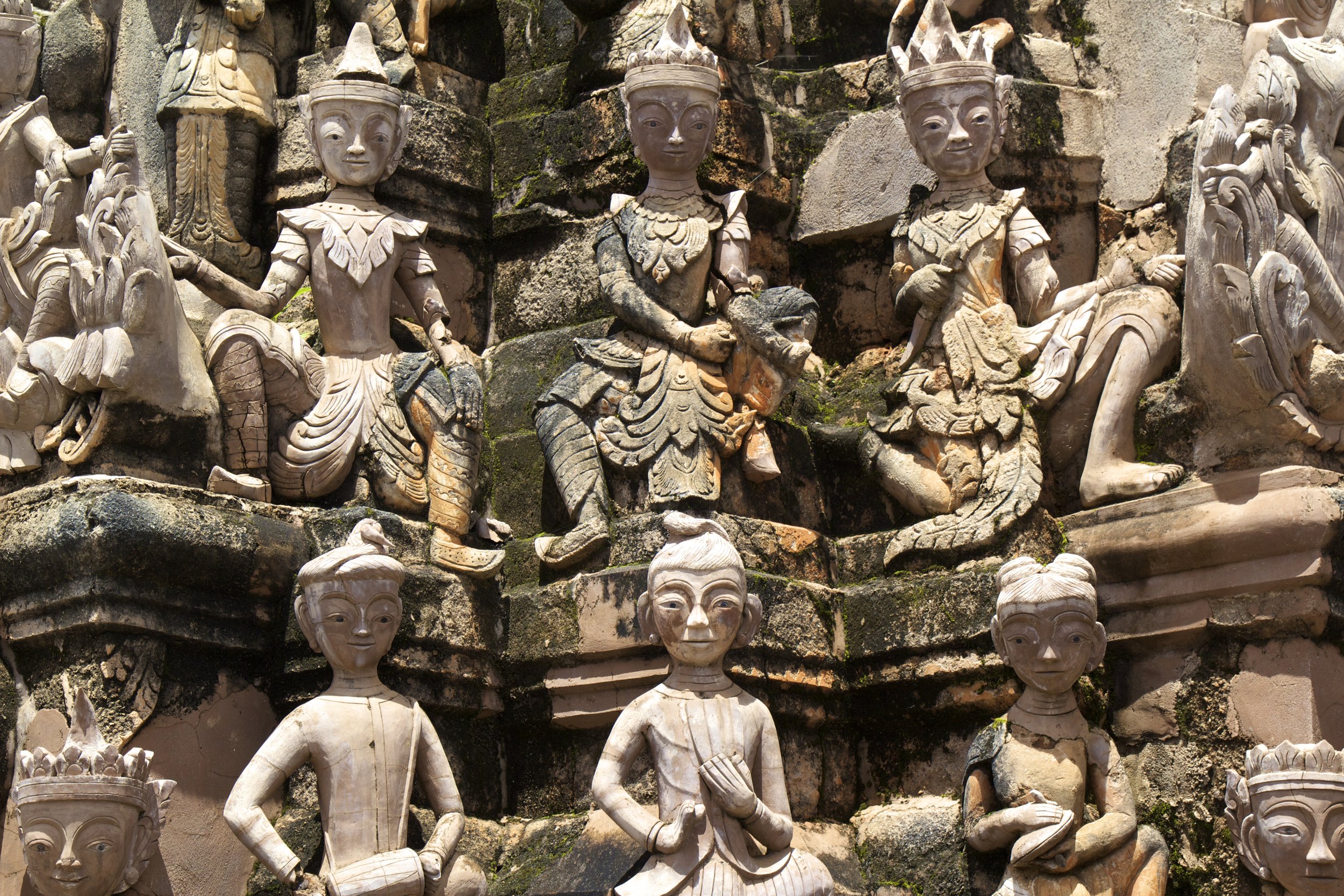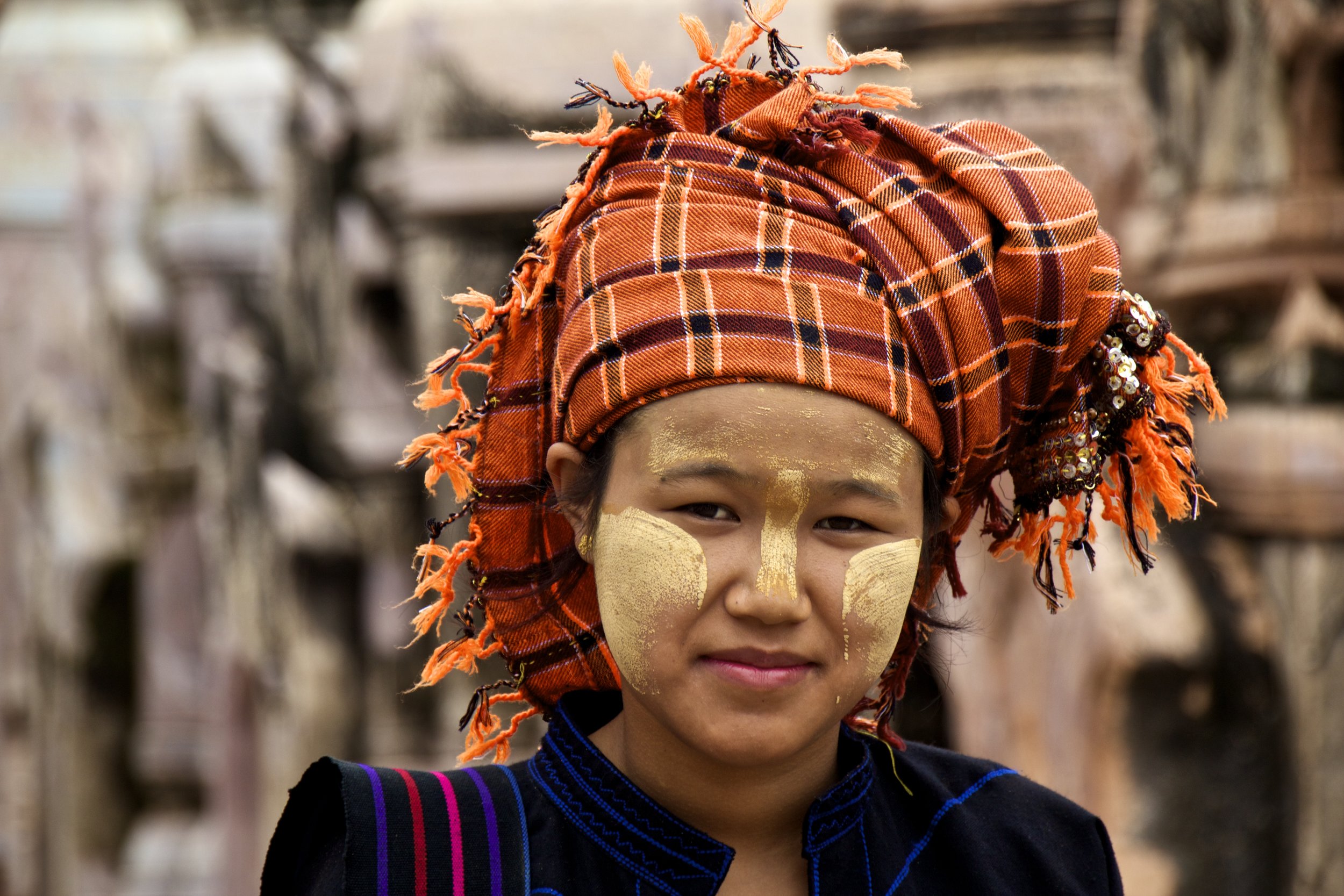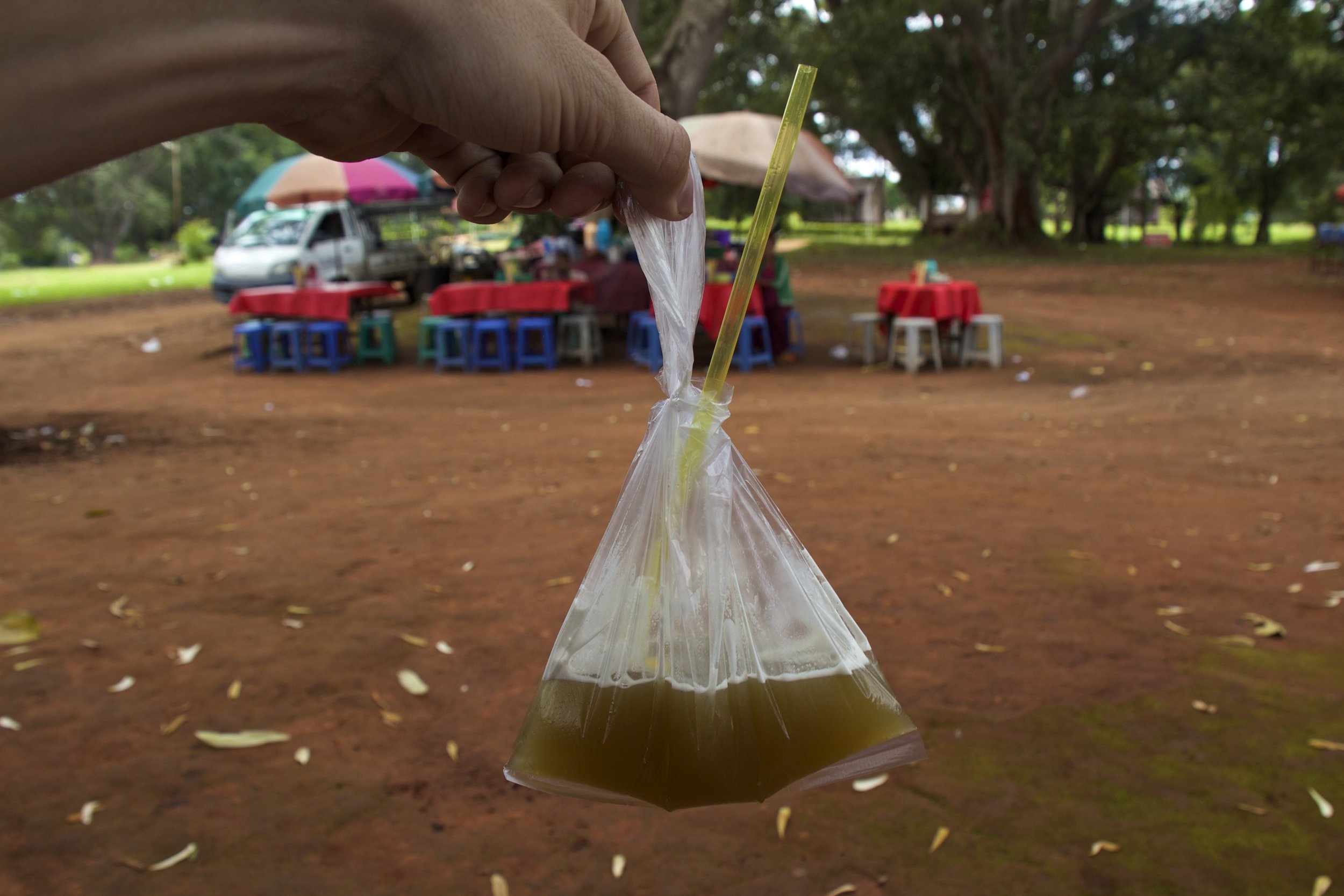Inle Lake was beautiful, but a bit boring. My horrible hotel room didn’t make the prospect of spending another night there any more enticing, so after weighing my options, I decided to leave a night early. But before I did, I wanted to get off the beaten path a little bit. For 40 USD, a few new friends and I hired a truck to take us deeper into the Shan State to a temple complex called Kakku.
What is the Shan State?
Before we go on I should probably explain a little bit about what the Shan State is, and why you should be interested. Burma is unique because of its mind-boggling ethnic diversity. This creates a lot of ethnic tension within the country, as evidenced by their long running civil war, which still continues to this day. The Shan State is a large territory that was home to multiple different ethnic minorities and their armies. It was not too long ago that the Shan State was a very dangerous place. However, since the signing of the ceasefire agreement, the region has been relatively stable. Still, the Shan State, which accounts for almost a quarter of Burma, is largely out of the control of the Burmese government. Here the local militias still hold the power. It is sort of like the ‘Wild Wild West’ of Burma.
From Inle Lake TO Taunggyi
We hopped in the back of a truck around 7am. From there we went straight out onto the road. The town we were staying in, Nyaung Shwe, as well as the whole of Inle Lake, is surrounded by mountainous highlands. It was not long before we found ourselves making the steep ascent up to the capital of the Shan State, Taunggyi.
Taunggyi is a low-key little town. There’s not much going on there, but that doesn’t keep it from being hot, congested, and loud. We had to stop at a government building to apply for and pay for our passes into the region. It cost 5,000 MMK (3.89 USD) per person.
From the building we were given an English-speaking guide / escort. It was a girl named Nana (coincidentally the same thing that I call my grandmother). She was one of the Pa’O people. She wore traditional Pa’O clothing, and a slight variation on the typical Burmese makeup. Her make up was apparently derived from a different kind of wood, which gave it a yellowish tint.
Who are the Pa’O people?
Much like the H’mong in Vietnam, the Pa’O are a race without a country. Only the 7th largest ethnic minority in Burma, not much is known about the Pa’O people. Today there are about 600,000 of them total, and they mostly live in the Shan State. Some of them have also moved to Thailand as refugees from the on-going civil war in Burma. Most of them speak at least 3 languages: Burmese, Shan and Pa’O. Our guide/escort obviously also spoke English. There are many sub-group underneath the Pa’O umbrella, but even less is known about these distinctions. This is perhaps an unsatisfying explanation, but it should give you some idea of just how many different ethnic groups call Burma home. It’s crazy. It should come as no surprise that there is a civil war in Burma with all those different ethnic groups. Most countries can barely handle having more than 1.
So the Pa'O are an obscure ethnic group, and they are getting obscurer (is that a word?). If you want to know more, here's an interesting, albeit dated and poorly formatted article...
From Taunggyi To Kakku
From there it was long drive out into the middle of nowhere. The roads were terrible, but the views were pretty. Early on in our drive we came to a small market, so we stopped to look around. This was mostly a Pa’O market, by the looks of the headdresses I was seeing. It was very cool. All manner of teas, herbs, and spices were being sold on tarps laid out on the dirt. At one tent sat a man surrounded by boxes of pills. This was apparently the local pharmacy. Here are some pictures I took:
I meandered through the market, eventually buying a few apples for the road, and then returned to the truck. We got back on the road to complete the bulk of our 2 and a half hour trip out to Kakku.
It was a bumpy ride, but it was beautiful. Out the window I could see a huge valley below us with a river running through it. At settlements on the river I could see smoke rising from fires. Beyond that, rising up in the distance, loomed a formidable mountain range. The green color scheme of the view gave it all a very soft feel, but the skyline of these mountains was jagged and unforgiving. Storms loomed beyond the mountains, but they showed no signs of coming our direction. This valley was a safe place. It reminded me of Colorado, back home. I turned on some melancholy country music and stared out the window.
This picture really doesn't do it justice, unfortunately. The road was too bumpy to get a clear shot.
Finally, Kakku
Eventually we reached Kakku. What an odd place. I’ve never seen a landmark quite like it. Instead of waste my time explaining it, have a look for yourself:
Construction of these hundreds of stupas began roughly during the same time as it did for the temples of Bagan. I’d like to give you more history, but after some research I decided that it's really not very exciting. It’s just an interesting place to see. Besides, I might have already hit my quota for informative writing explaining what the Shan State is and who the Pa’O are. Here’s a few pictures from walking through Kakku, including a nice portrait I took of Nana:
The walk through Kakku was silent but for the sound of thousands of wind chimes: the bells on the stupas high above our heads. Kakku sits on the edge of a small mountain, before a steep drop off down to a valley, so there was no shortage of wind to keep these bells ringing. It added an interesting dimension to the place. The soundtrack to this place has always been the same, since the day it was completed: silence and bells.
To be honest, it wasn't the most exciting place. Don't expect anything crazy if you ever go here. But it was cool, one of the reasons being that it doesn't get many visitors. There were a few groups of tourists walking around, but I'm pretty sure that most of them were Burmese people from the surrounding area. Clearly they weren't accustomed to seeing white faces. They gawked at me, but one of the more social in the group asked to take a selfie with me, which I'm used to by now.
After we finished walking through, we were sitting in the shade watching a little boy play with a rubber band when I saw a familiar sight: sugarcane juice! This stuff was the best in Vietnam. I ordered a cup to go, but I was a little disappointed with the result:
It was a long dusty drive back in the bed of that truck. We all wrapped scarves around our noses and mouths as if we were in the Sahara desert. Eventually we got back to Taunggyi where we were dropped off at the bus station. We were told that we had an hour to kill before being shuttled off to another, bigger bus station. We went off to have a beer, but when we got back an hour later, our ride never showed up. After 30 additional minutes of waiting, we got worried. Unfortunately, nobody spoke English, so I had to take things into my own hands. I pretty much just asked random people passing by on the street if they spoke English until eventually we found somebody that could translate for us. The guy at our little bus stop told us (through our translator) that it would be an additional hour before we got picked up. So we sat back down on the stoop, relieved, and waited.
The Trip Back to Rangoon Begins
Eventually the shuttle came. It was a pick-up truck with a covered bed like everything else around here. The bed of the truck was filled with people, and the top of the roof was piled high with bags. We handed our bags over to be thrown onto the roof, and then snuggled into the back with the locals. As I was getting in, it occurred to me that the bags on top of the truck were not tied down.
“WTF! Are they going to tie those down before we go?” I demanded.
I was reassured that the driver knew what he was doing, and everything would be fine. The truck immediately lurched forward, and so began the most terrifying drive of my life. It wasn’t terrifying because I was afraid for my well-being (which is not to say that I wasn’t, because I think everybody was a little bit, even the locals), it was terrifying because my cameras and my computer were my bag up there.
The truck took turns so fast that everybody was leaning against each other constantly. We took a roundabout so fast that I’m pretty sure the wheels on one side of the bus lifted off the ground. I was freaking out for the safety of my bag.
My friends laughed, and tried to reassure me that it was going to be okay. Just then a low hanging branch came flying towards our bus and hit the rack of bags, hard. The branch hit our bags so hard in fact, that leaves and debris fell down on us. I was officially freaking out that this would be the end of my computer and camera, but there was nothing I could do from inside my little cage.
I wormed an arm out of the bars of the truck so that I could have a chance of catching my bag when it, inevitably, would go flying off. I probably looked pretty dumb to all the locals, but I didn't care. No shame.
Then we got to the road down the mountain. They were going so fast that I thought I was going to throw up. Some of the locals had their faces buried into their smaller bags or each other’s shoulders. Now, instead of a short drop onto the street, my bag would faced a drop off the side of a cliff. Great.
Eventually we reached the bottom and were deposited at the bus station. You’ll be happy to know that my bag was fine. On the bus, I sat in my seat, listening to Buddhist prayers being blasted over the speakers. I tried to take that time to de-stress. I had a long ride ahead of me through some rough terrain. It would be about 12 hours back to Rangoon. I took a generous dose of my Vietnamese knock-off Valiums, and did my best to sleep as our bus thundered down the tiny mountain roads.
Eventually, around sunrise, the bus came to a halt on the side of the highway. I woke up to a man tapping me and motioning for me to get off, so, groggily, I did. I grabbed my bag and I stumbled down the aisle. I looked back up at the bus, expecting the other passengers to follow me, but nobody did. Thanks to "Valiums" I was a bit too groggy to be worried. But then the door to the bus shut. And there I stood, alone on the side of the highway, about 30 km outside Rangoon.

![Peter Goes Deeper Into The Shan State: Kakku [Burma]](https://images.squarespace-cdn.com/content/v1/5876d8d6e3df28c4d83ae377/1485795155430-URKDTDVQBMGEJKH69EHS/kakku+temple+shan+state+burma+myanmar+18.jpg)








































